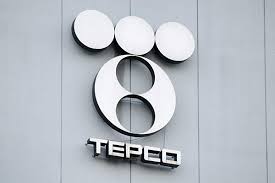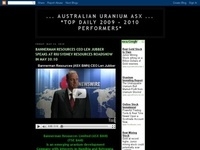Published on Monday July 04 2011 (AEST)

 TOKYO—Some senior engineers at Tokyo Electric Power Co. knew for years that five of its nuclear reactors in Fukushima prefecture had a potentially dangerous design flaw, but the company didn't fully upgrade them, dooming them to failure when the earthquake hit, a Wall Street Journal examination of the disaster shows.
TOKYO—Some senior engineers at Tokyo Electric Power Co. knew for years that five of its nuclear reactors in Fukushima prefecture had a potentially dangerous design flaw, but the company didn't fully upgrade them, dooming them to failure when the earthquake hit, a Wall Street Journal examination of the disaster shows.The company used two different designs for safeguarding its 10 reactors in Fukushima. When the devastating quake struck on March 11, the five reactors with the newer design withstood the resulting 45-foot tsunami without their vital cooling systems failing. Those reactors shut down safely.
But the cooling systems failed at four reactors with the older design. Backup diesel generators and electrical-switching equipment were swamped by seawater. As a result, fuel melted down at three reactors and there were explosions at several reactor buildings, culminating in the largest release of radiation since Chernobyl.
 The tsunami exposed an Achilles heel in the design of some of the plants: the questionable placement of a single kitchen-table-size electric-switching station. At newer plants, the station was in a robust building that also housed the reactor. In others, it stood in a poorly protected outbuilding—a relic of the original design. When the tsunami hit, those switches were knocked out, rendering operating generators useless.
The tsunami exposed an Achilles heel in the design of some of the plants: the questionable placement of a single kitchen-table-size electric-switching station. At newer plants, the station was in a robust building that also housed the reactor. In others, it stood in a poorly protected outbuilding—a relic of the original design. When the tsunami hit, those switches were knocked out, rendering operating generators useless.
This article is based on interviews with a dozen current and former senior Tokyo Electric Power engineers, including several who were intimately involved when the fateful design decisions were made in the 1970s. Some of them say the company, known as Tepco, had opportunities over the decades to retrofit the oldest reactors. They blame a combination of complacency, cost-cutting pressures and lax regulation for the failure to do so.
"There's no doubt Tepco should have applied new designs" throughout Fukushima, says Masatoshi Toyota, 88 years old, once a top Tepco executive who helped oversee the building of the reactors. He says he blames himself for not noticing the design problems and correcting some of them later.
 A spokesman for Tepco declined to comment for this story, citing the Japanese government's ongoing investigation into the cause of the accident.
A spokesman for Tepco declined to comment for this story, citing the Japanese government's ongoing investigation into the cause of the accident.
Japan isn't the only nation grappling with aging nuclear reactors. The U.S. has dozens of reactors that have operated for more than 30 years, and 23 with the same General Electric Co. design as the older Fukushima reactors. Several face fights over relicensing in the next few years. Elsewhere, Germany and Switzerland have decided to phase out their aging plants and drop nuclear power altogether.
All the Fukushima plants, including the newer ones, were based on GE designs. GE maintained lucrative contracts to service GE reactors in Japan and was engaged with partner Hitachi Ltd. in a global campaign to extend the lives of its aging plants.
GE said any flaws at the Fukushima reactors weren't its fault because Tepco was in charge of design changes. "The location of emergency diesel generators at the Fukushima Daiichi plant were reviewed and approved by Tepco and regulatory authorities," said GE spokeswoman Catherine Stengel.
Construction of the oldest Fukushima plants dates to the 1960s. The Fukushima Daiichi nuclear-power station—the source of all the post-quake radiation problems—was the first for Tepco, Japan's largest utility. The facility, located on the Pacific coast, was seen as a learning lab. At that time, barely two decades removed from the devastation of World War II, Japan was incapable of designing its own nuclear-power plants. It imported nuclear technology wholesale from GE, say Japanese engineers.
The early reactors used GE's Mark 1 design. The general contractor was an American engineering firm called Ebasco, which no longer exists. To keep the reactor compact and economical, Ebasco made the reactor building small, said Mr. Toyota, the engineer who helped oversee the construction.
Nuclear-power plants must continuously cool their unstable, radioactive fuel. Those cooling systems run on electricity, which the plants ordinarily pulled from the nation's power grid. If the grid fails, on-site diesel generators kick on to keep the cooling systems running. If they don't, that plant is in danger of melting down.
 Because Tepco's first reactor buildings were small, the generators had to go somewhere else. Engineers put them into neighboring structures that house turbines. The reactor buildings were fortress-like, with thick concrete walls and dual sets of sturdy doors. The turbine buildings were far less sturdy, especially their doors.
Because Tepco's first reactor buildings were small, the generators had to go somewhere else. Engineers put them into neighboring structures that house turbines. The reactor buildings were fortress-like, with thick concrete walls and dual sets of sturdy doors. The turbine buildings were far less sturdy, especially their doors.
"Backup power generators are critical safety equipment, and it should've been a no-brainer to put them inside the reactor buildings," Mr. Toyota says. "It's a huge disappointment that nobody at Tepco—including me—was sensitive enough to notice and do something about this discrepancy."
Kiyoshi Kishi, a former Tepco executive in charge of nuclear-plant engineering, says that at the time of the original design, people thought a large tsunami on Fukushima's Pacific coast was "impossible." Later Tepco adjusted some parts of the plant—but not all—to address tsunamis of up to 18.8 feet, less than half the height of the one that hit in March.
Another Tepco engineer who visited the Fukushima Daiichi plant many times starting in the 1970s says the cramped reactor buildings barely allowed room to install a valve during routine work. "It was super-inefficient," this engineer says.
The Tepco engineers say Tepco was so dissatisfied with the Mark I that it decided to switch designs midstream as it was planning the sixth and final reactor at Fukushima Daiichi. An improved GE reactor with a sleeker design—the Mark II—was available. The No. 6 reactor building had enough space for the backup generators to go inside.
 Tepco improved its design further when it started building its Fukushima Daini complex about seven miles away in the late 1970s. The four reactors built there, all using the Mark II, had a more "domestic flavor," Tepco engineers say, with specs that better addressed earthquakes and tsunamis.
Tepco improved its design further when it started building its Fukushima Daini complex about seven miles away in the late 1970s. The four reactors built there, all using the Mark II, had a more "domestic flavor," Tepco engineers say, with specs that better addressed earthquakes and tsunamis.
GE says it made improvements to the Mark I design in the 1980s in the U.S. and Japan as technology evolved. It says the Mark I is safe.
By 1987, Tepco had opened its tenth and final reactor in Fukushima prefecture. Nos. 1 through 5 at Fukushima Daiichi had the old design. The other five had the newer design.
Over the ensuing years, Tepco updated the plants repeatedly, and the Japanese government tightened standards for earthquake preparedness several times. The government gave the turbine buildings that contained the generators for the older reactors a lower earthquake-preparedness rating, Class B, than the reactor buildings that housed the generators at the newer facilities, which were graded Class S.
"Some of us knew all along and were concerned about the inconsistent placements of diesel generators at Fukushima Daiichi between reactor No. 6 and the older reactors 1 through 5, and their potential vulnerability," says one of Tepco's top engineers who has guided the company's nuclear division.
The engineer says that when he was preparing for a regularly scheduled government inspection in 1987, the inconsistent placement of the backup generators "stood out like a sore thumb." He says he asked his colleagues, "Do we need to fix this?"
Another expert, he recalls, said it wasn't necessary because the turbine buildings were more earthquake-resistant than their Class B rating suggested. The engineer says he concluded that "it simply wasn't a must-fix."
 Says Mr. Toyota, the former Tepco executive: "Over the years, a lot of engineers have come up with different ideas to improve safety. But my guess is that they couldn't come forward and point that out to management because of the high costs associated with back-fitting older reactors with new designs."
Says Mr. Toyota, the former Tepco executive: "Over the years, a lot of engineers have come up with different ideas to improve safety. But my guess is that they couldn't come forward and point that out to management because of the high costs associated with back-fitting older reactors with new designs."
Tepco was criticized during those years for having high electricity rates, and such significant changes would have been difficult, say former company officials.
In 1998, to comply with new regulatory requirements, Tepco decided to give each reactor at Fukushima Daiichi at least two dedicated backup diesel generators, according to executives—something that not all of them had. New backup generators for reactors Nos. 2 and 4 were placed in new buildings located higher on the mountainside next to the reactors. All six reactors were given access to generators housed outside of the vulnerable turbine buildings.
Those were major safety advances, and Tepco was now just one safety-improvement away from ensuring backup power to all of its reactors in the event of a March 11-size tsunami. It involved the switching stations that sent power from the backup generators to the reactors' cooling systems. Japanese engineers call the stations meta-kura—a Japanese pronunciation of "metal-clad," referring to the equipment's covering.
The meta-kura for reactors Nos. 1 through 5 were still in the poorly protected turbine buildings—Class B safety territory—and that's where they stayed. (Because of its more-advanced original design, No. 6's meta-kura was already in the reactor building.)
 Katsuya Tomono, a former Tepco executive vice president who in the late 1990s was in charge of nuclear-plant equipment such as backup generators, says he believes that "engineers on the ground took the easy way out and used the switch yard that already existed in the turbine buildings. As far as I know, there was no debate on this matter among engineers who led the move to add backup generators."
Katsuya Tomono, a former Tepco executive vice president who in the late 1990s was in charge of nuclear-plant equipment such as backup generators, says he believes that "engineers on the ground took the easy way out and used the switch yard that already existed in the turbine buildings. As far as I know, there was no debate on this matter among engineers who led the move to add backup generators."
In 2001, when the original 30-year operating permit for Fukushima Daiichi's No. 1 reactor was set to expire, Tepco applied for and received a 10-year extension. It got another one earlier this year, just five weeks before the accident. Regulators never reviewed whether the basic blueprint of the older reactors was flawed, the abbreviated minutes of government deliberations show.
"The extension was based on the premise that design reviews were undertaken before the plant was ever built, so there was no discussion of fundamental design and construction specifications," says Katsunobu Aoyama, an inspection official at Japan's regulator, the Nuclear and Industrial Safety Agency. "Our process focused on things like pipes and fittings."
The nuclear agency is part of the industry ministry, which also is responsible for promoting nuclear power. The ministry aimed to raise nuclear power to more than half of Japan's electricity output, from around 30% last year—a goal reaffirmed as recently as June 2010 by Prime Minister Naoto Kan.
At around 3:30 p.m. on March 11, 45 minutes after a magnitude 9.0 earthquake struck, a giant wave hit Fukushima Daiichi. It knocked out the power grid and swamped the backup generators housed in the turbine buildings since the 1970s.
All three of the generators added in the late 1990s, located in the separate hillside buildings, kept working. But they didn't do any good at reactor Nos. 1 through 4 because the meta-kura that delivered power from the generators to the cooling systems got swamped in the lightly protected turbine buildings.
"Once water gets in there, the whole thing is kaput," said Mr. Tomono, the former Tepco executive vice president.
 Radioactive fuel began overheating at reactors Nos. 1 through 3. The risk was that the fuel would melt and release radiation. Within hours, fuel at No. 1 was almost completely melted and lying at the bottom of its vessel, according to Tepco.
Radioactive fuel began overheating at reactors Nos. 1 through 3. The risk was that the fuel would melt and release radiation. Within hours, fuel at No. 1 was almost completely melted and lying at the bottom of its vessel, according to Tepco.
Over the next few days, explosions at Nos. 1 and 3 severely damaged those reactor buildings. Hydrogen leaking from No. 3 is thought to have triggered a blast at the No. 4 reactor building, and No. 2 probably had an explosion, too. The multiple blasts released radiation into the outside air.
In contrast, reactors No. 5 and 6, and all four reactors at nearby Fukushima Daini, safely reached cold shutdown. At No. 6, two generators located inside the reactor building became inoperable temporarily, perhaps because water got inside through exhaust pipes, according to Tepco officials. But the newest generator housed in a separate building kept working and supplying power through its undamaged meta-kura, secure inside the reactor building. Tepco was able to use that power to keep equipment at neighboring No. 5 running.
The worst-hit reactors are still months away from reaching cold shutdown.
Mr. Kishi, the former Tepco executive in charge of nuclear-plant engineering, watched the nuclear plant he had worked on for decades go up in smoke. He says he believes the discrepancy between the older and newer reactors at Fukushima was "subtle."
 But in retrospect, he says, Tepco's inconsistency in applying improved standards was the "basic flaw" that doomed Fukushima and darkened nuclear power's prospects around the world.
But in retrospect, he says, Tepco's inconsistency in applying improved standards was the "basic flaw" that doomed Fukushima and darkened nuclear power's prospects around the world.


 Australian Uranium News - Research
Australian Uranium News - Research


